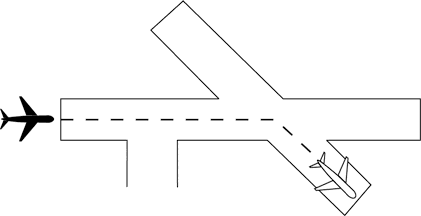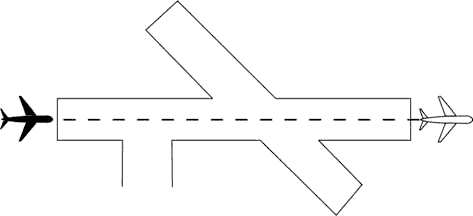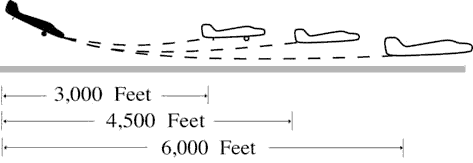3-10-3. SAME RUNWAY SEPARATION
- Views Views: 4,062
- Last updated Last updated:
-
3-10-3. SAME RUNWAY SEPARATION
- Separate an arriving aircraft from another aircraft using the same runway by ensuring that the arriving aircraft does not cross the landing threshold until one of the following conditions exists or unless authorized in para 3-10-10, Altitude Restricted Low Approach.
- The other aircraft has landed and is clear of the runway. (See FIG 3-10-1.) Between sunrise and sunset, if you can determine distances by reference to suitable landmarks and the other aircraft has landed, it need not be clear of the runway if the following minimum distance from the landing threshold exists:
- REFERENCE
- P/CG Term - Clear of the Runway.
FIG 3-10-1 Same Runway Separation 
- (a) When a Category I aircraft is landing behind a Category I or II- 3,000 feet. (See FIG 3-10-2.)
FIG 3-10-2 Same Runway Separation 
- (b) When a Category II aircraft is landing behind a Category I or II- 4,500 feet.
(See FIG 3-10-3.)
FIG 3-10-3 Same Runway Separation 
- The other aircraft has departed and crossed the runway end. (See FIG 3-10-4). If you can determine distances by reference to suitable landmarks and the other aircraft is airborne, it need not have crossed the runway end if the following minimum distance from the landing threshold exists:
- (a) Category I aircraft landing behind Category I or II- 3,000 feet.
- (b) Category II aircraft landing behind Category I or II- 4,500 feet.
- (c) When either is a category III aircraft- 6,000 feet. (See FIG 3-10-5.)
FIG 3-10-4 Same Runway Separation 
FIG 3-10-5 Same Runway Separation 
- When the succeeding aircraft is a helicopter, visual separation may be applied in lieu of using distance minima.
WAKE TURBULENCE APPLICATION
- The other aircraft has landed and is clear of the runway. (See FIG 3-10-1.) Between sunrise and sunset, if you can determine distances by reference to suitable landmarks and the other aircraft has landed, it need not be clear of the runway if the following minimum distance from the landing threshold exists:
- Issue wake turbulence advisories, and the position, altitude if known, and the direction of flight of:
- The super or heavy to aircraft landing behind a departing/arriving super or heavy on the same or parallel runways separated by less than 2,500 feet.
- The B757/large aircraft to a small aircraft landing behind a departing/arriving B757/large aircraft on the same or parallel runways separated by less than 2,500 feet.
- REFERENCE
- AC 90-23, Aircraft Wake Turbulence, Para 12, Pilot Responsibility.
- FAA Order JO 7110.65, Para 3-10-10, Altitude Restricted Low Approach.
- EXAMPLE
- “Runway two seven left cleared to land, caution wake turbulence, heavy Boeing 747 departing runway two seven right.”
- “Number two follow Boeing 757 on 2-mile final. Caution wake turbulence.”
- “Traffic, Boeing 737 on 2 mile final to the parallel runway, runway two six right, cleared to land. Caution wake turbulence.”
- Separate an arriving aircraft from another aircraft using the same runway by ensuring that the arriving aircraft does not cross the landing threshold until one of the following conditions exists or unless authorized in para 3-10-10, Altitude Restricted Low Approach.